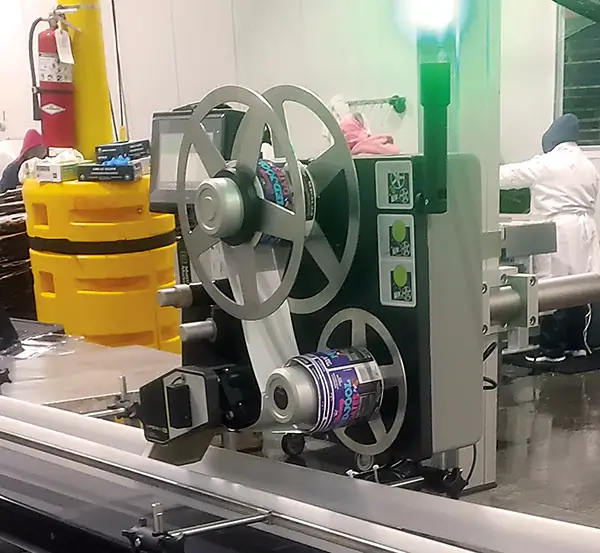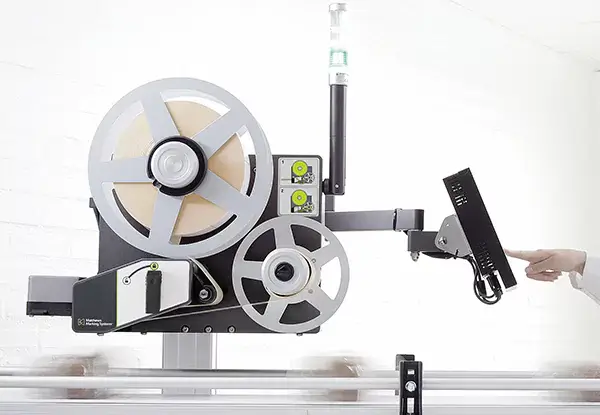The top 5 mistakes to avoid when choosing a print and apply labeling solution
Are you choosing a new print-and-apply labeling system? From hidden soft costs to equipment that causes more problems than it solves, it’s easy to find yourself with a bad case of buyer’s remorse. The average manufacturer confronts 800 hours of equipment downtime per year — more than 15 hours per week – let’s make sure your labeling solution doesn’t add to the problem.
A well-chosen print-and-apply labeling system can be a game-changer in many ways, streamlining production lines, ensuring consistent, high-quality coding on every product and reducing, not adding to, your maintenance needs.
Choosing the right automated labeling system can be new territory for many plant managers and engineers, and coming up to speed takes hours you don’t have browsing through websites and talking to providers.
This blog post gives you a head start. Here, we share the most common mistakes in choosing a print-and-apply labeling system, and what you should do instead:
Mistake #1: Upfront tunnel vision
When you have a budget to stick to, choosing the cheapest option is tempting. But the cheapest price upfront can be more expensive down the track. Maintenance and repairs might cost more, and consumables may be more expensive. Or, in choosing the cheapest option, you might not be getting a solution that fits your needs, and these compromises can seriously cost your efficiency and performance.
Do this instead:
Look beyond the price tag and factor in:
- Maintenance costs: Will the system require frequent servicing and expensive parts replacements?
- Integration with existing infrastructure: Are additional modifications necessary to adapt it to your current setup? What will these cost?
- Hidden costs: Consider consumables like ink ribbons and labels and potential downtime for breakdowns or changeovers.
Mistake #2: Shortsighted system selection
Selecting a print-and-apply labeling system that meets your current needs might seem like the right move, but have you considered the growth trajectory of your business? A system that fits perfectly today could become a bottleneck tomorrow. As your operations expand, you might find yourself needing to label a variety of package sizes, manage an array of new SKUs, or adapt to different messaging requirements.
By choosing a solution that only addresses immediate challenges, you risk anchoring your business to a system that can’t scale with you, potentially stifling your growth. It’s crucial to think ahead and choose a system that not only meets today’s needs but can also evolve and expand as your business does.
Do this instead:
Even if you are still determining your future plans, choose a system that can adapt to handle different label sizes, packaging sizes, and printing requirements. Also, look for a system that can grow with your business, whether adding additional labelers or expanding with more production lines.
Consider these factors:
- Scalability: Can the system handle increased production volume, faster production speeds, or accommodate future product diversification?
- Flexibility: Will it integrate seamlessly with other coding equipment?
- Future proofing: Does the system have the capacity to accommodate new regulatory labeling requirements?
For example, MPERIA is a truly universal controller, so it’s easy to expand capacity with additional printers across multiple lines. See how 4Earth Farms is preparing for the future with MPERIA.

Automated print and apply labeling helped 4-Earth Farms prepare for growth.
Mistake #3: Complicating the simple
When it comes to technology, complexity isn’t better. A complex print-and-apply machine with a steep learning curve can lead to operator errors and slow production.
Every time a new staff member joins, you must invest in more training, which takes operators away from their daily tasks. Then, they wait months before they’re comfortable using the system. This frustrates staff operators and managers and impacts productivity.
Do this instead:
Put simplicity and user-friendliness at the top of your list. Usability is critical for success. You want your employees to be comfortable operating the system with minimal training.
By ensuring you have an easy-to-use system, you can devote less time to upfront onboarding and ongoing training. This is especially important if you’re facing high levels of staff turnover.
Opt for a system that:
- Is easy to set up and operate: Look for an intuitive interface with minimal training requirements and easy installation features, such as a compact frame, flexible mounting options, and pre-loaded test layouts.
- Minimizes operator intervention: It should have features such as simple, tool-free label and ribbon replacement, and error detection.
- Offers clear instructions and user support: It should have readily available manuals and responsive technical assistance.
With the MPERIA A-Series, line operators need only learn one controller, MPERIA. It enables easy message creation and changeover, and consumables are easily replaced thanks to unrestricted access.
Mistake #4: Overlooking the power of integration
You might think of labeling as a standalone process but treating it as such can hold back your production efficiency. A standalone labeling system can create data silos and disrupt workflow. If your labeling system is not connected to the central database, operators must perform message creation and coding updates manually, leading to increased errors, unnecessary labor hours, and slower production.
Do this instead:
Look at how easily the system integrates with existing systems you already have in place. The MPERIA controller can be easily integrated with MES, PLC, ERP, third-party marking systems, label verification, and validation — all without expensive middleware. It enables centralized message creation and code automation through a single, intuitive interface.

Modern print and apply labeling machines such as the MPERIA A-Series are easy to use, integrate with production systems, and require minimal maintenance.
Mistake #5: Skimping on safety – a risky business
Some automated print and apply labeling systems can create a safety hazard, from swinging arms hitting operators or workers getting caught between the labeler and incoming pallets. Safety cages can be big and bulky, meaning workers may be tempted to enter the cage during operation to correct a minor problem.
Do this instead:
Choose a system designed to keep your workers safe. The MPERIA A-Series has minimal moving parts, intelligent sensors, and fewer trap points. Applicator pads automatically retract if a human or interference is detected, which protects employees if they make incidental contact. By reducing the risk of injury, the A-Series can be easily integrated into your production environment without bulky cages or bolt-on protection.
We’re here to help
By avoiding these common mistakes and knowing what to look for in a labeler, plant managers can select a print-and-apply labeling system that delivers long-term value, efficiency, and scalability.
But you don’t have to do it alone. Partnering with a reputable labeling solutions provider like Matthews Marking Systems ensures you receive expert guidance and that you choose the right system for your specific needs—no matter what you’re trying to label or how your production lines are set up.
Register for a free demo
Want to avoid common pitfalls and optimize your labeling process? Schedule a free demo of the MPERIA A-Series today and see how the right system can streamline your operations and cut costs. Simply complete the form below and we’ll be in touch right away.
